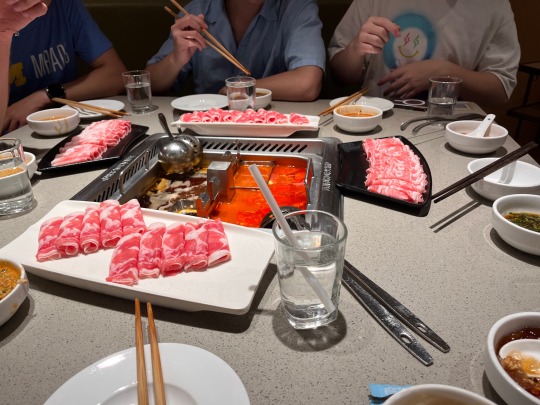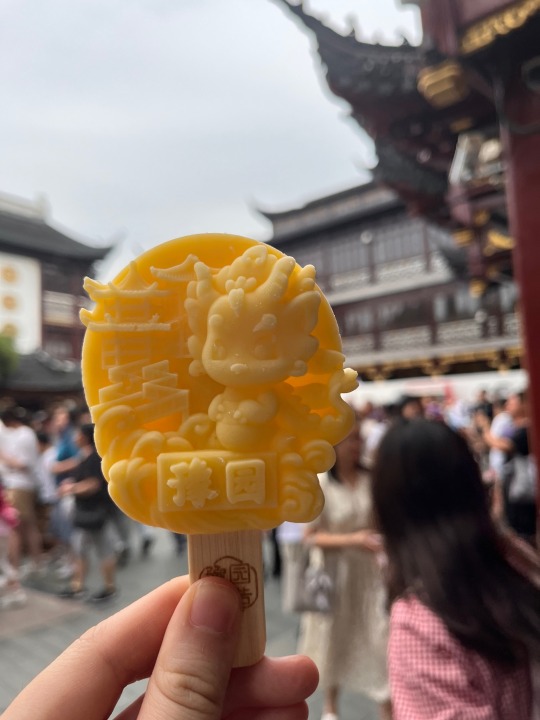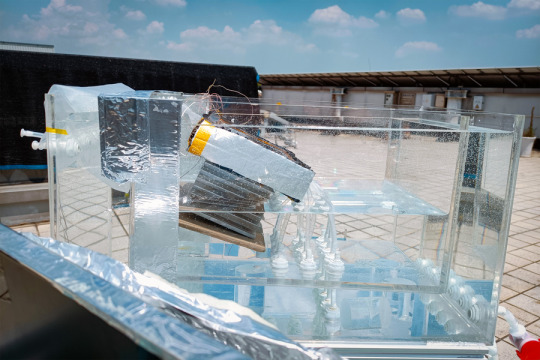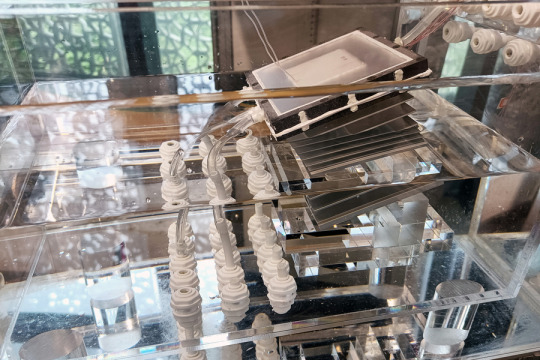#shanghai jiao tong university
Explore tagged Tumblr posts
Text
Malaysians will be given more Scholarship Opportunities by China and the Railway that China is building in Malaysia is now almost halway complete; A Chinese Nickel Company has started Production in Indonesia; A Chinese Automotive Company is investing Usd 285 million to build a Factory in Thailand and a Chinese Display Panel Company is expanding is Factory in Vietnam
#malaysia#china#indonesia#thailand#vietnam#south east asia sea#ouyang yujing#shanghai jiao tong university#tsingshan group#nickel#morowali#east coast rail link ecrl#china communications construction company cccc#united states us#manila bay#changan auto#electric vehicle ev#boe technology group#ba ria vung tao
0 notes
Text
Scientists have discovered how plants adapt their root systems in drought conditions to grow steeper into the soil to access deeper water reserves. Plant scientists from the University of Nottingham, in collaboration with Shanghai Jiao Tong University, have identified how abscisic acid (ABA), a plant hormone known for its role in drought response, influences root growth angles in cereal crops such as rice and maize. The results have been published in Current Biology.
Continue Reading.
102 notes
·
View notes
Text

Physics researchers identify new multiple Majorana zero modes in superconducting SnTe
A collaborative research team has identified the world's first multiple Majorana zero modes (MZMs) in a single vortex of the superconducting topological crystalline insulator SnTe and exploited crystal symmetry to control the coupling between the MZMs. This discovery, published in Nature, offers a new pathway to realizing fault-tolerant quantum computers. The team was led by Prof. Junwei Liu, Associate Professor in the Department of Physics at the Hong Kong University of Science and Technology (HKUST), and Prof Jinfeng Jia and Prof Yaoyi Li from Shanghai Jiao Tong University (SJTU). MZM is a zero-energy topologically nontrivial quasiparticle in a superconductor that obeys non-Abelian statistics, allowing for inequivalent braiding sequences, even though the total number of exchanges is the same. This contrasts with ordinary particles, such as electrons or photons, where different braiding always results in the same final state. This unique property protects MZMs from local perturbations, making them an ideal platform for robust fault-tolerant quantum computation.
Read more.
14 notes
·
View notes
Text
We seem to have hit on a really good one here, thanks to a collaboration between MIT and Shanghai Jiao Tong University (SJTU). I couldn’t even cram all the benefits of this thing into my diary title.
This device breaks the record for rate of fresh water production from seawater by a solar device, and as awesome as that is, it’s actually kind of a charming side note. The bigger breakthrough is that the device can keep running up near this rate for a long time without getting fouled by salt accumulation, and it does this by emulating natural processes that occur in the sea. That cuts costs by about 10x compared to typical solar desalination, making the cost of the fresh water it produces comparable to that of tap water.
This is real, as legit as MIT and SJTU... which is pretty legit.
One of the onrushing 21st century crises is fresh water, but if we can convert sea water cheaply & efficiently then that particular crisis is solved!
45 notes
·
View notes
Text

Piezo Ignites Macrophages
Analysing the relationship between macrophages – large, multifunctional cells of the immune system – and fibrosis of the liver resulting from repeated injury and repair in mice reveals the role of a molecule called Piezo1 via which macrophages sense mechanical signals of tissue 'stiffness', alerting them to clear dead cells limiting inflammation and fibrosis
Read the published research article here
Image from work by Yang Wang, Jin Wang and Jiahao Zhang and colleagues
Shanghai Institute of Immunology, Department of Immunology and Microbiology, Shanghai Jiao Tong University School of Medicine, Shanghai, China
Image originally published with a Creative Commons Attribution 4.0 International (CC BY-NC 4.0)
Published in Science Advances, June 2024
You can also follow BPoD on Instagram, Twitter and Facebook
#science#biomedicine#biology#macrophages#immune system#liver fibrosis#injury repair#immunofluorescence
7 notes
·
View notes
Text
Week 8: Cost Breakdown!
Okay 8 weeks in let's get down to business, how much money have I spent and where. First of all, there is the tuition which was base of $5,205 which includes housing and tuition for 3 months in addition to various trips that were planned by IPE. Through the trips, they likely spend a decent amount of money. However, I got a scholarship for $3,500 which most people in the program got if not more. The most pricy part of the program was probably the plane tickets which was approximately $2,000 for a round trip. Since coming to China, I’ve spent ~12,000RMB (1,500 USD). Here is a breakdown of my other expenses and how far everything can go.
In the first week, I spent a lot of my money on various dorm necessities like toilet paper, trashbags, and miscellaneous expenses. In total, it added up to approximately $300RMB (40USD) which is fairly cheap for all the little purchases that added up. Here is the rest of the breakdown for the past 8 weeks.
Utilities/Essentials: 504 RMB (68.85USD)
This includes hot water which we need to pay for separately which isn’t too bad since it is so hot I don’t end up using the hot water much and this also includes laundry which I do often because the hot weather makes me sweat through all my clothes at a lighting pace.
Food: 2043.18 RMB (279.12 USD)
This is crazy cheap considering I only eat out and I don’t pay attention to my food budget whatsoever (before I decided this blog was going to be a cost report). However, this is just my actual meals, I summed my snacks/drinks separately.


Snacks/Drinks: 1469 RMB (209.86 USD)
How have I spent almost the same amount on snacks and drinks as real food? I am ashamed but also it is so easy to buy snacks here and there when there is a convenience store everywhere (including in our dorm) and each snack is approximately 1 USD but those costs can add up for sure.



Shopping: 2964.3 RMB (404.92 USD)
It is sooo easy to spend so much on clothes when everything here is so cheap and cute. I also have been buying gifts and souvenirs for friends and family back home but I think I definitely need to reel in my shopping addiction.


Experiences: 1261.56 RMB (180.14 USD)
This includes fees and transportation for miscellaneous activities such as watching Inside Out 2 (which was really good), doing an escape room, going to a gaming cafe, or exploring downtown. This I would say was all 100% worth it.

Solo Trip: 3290 RMB (449.45 USD)
A few weeks ago, I went on a 4-day solo trip around Shanghai to Hangzhou and Nanjing. I ended up spending 449.45 USD for the train tickets which were approximately 120 RMB (17 USD) each and for the hotel rooms which were 340 RMB (48 USD) per night. Although, my friend who took a solo trip to Chongqing only spent 150 RMB on a hotel so it can definitely vary a lot. It was definitely worth the experience and you can definitely solo travel for even less money too!


Hopefully this helps put in perspective what studying abroad means in regards to money. To be honest, I have not been the most careful with money, because my parents have money in RMB that they won’t be using anytime soon. Regardless, hopefully my breakdown was helpful!
See ya next week!
Erin Xia
Mechanical Engineering
Shanghai Jiao Tong University Joint Institute
3 notes
·
View notes
Text
Desalination system could produce freshwater that is cheaper than tap water
MIT engineers and collaborators developed a solar-powered device that avoids salt-clogging issues of other designs.
Jennifer Chu | MIT News

Engineers at MIT and in China are aiming to turn seawater into drinking water with a completely passive device that is inspired by the ocean, and powered by the sun.
In a paper appearing today in the journal Joule, the team outlines the design for a new solar desalination system that takes in saltwater and heats it with natural sunlight.

The configuration of the device allows water to circulate in swirling eddies, in a manner similar to the much larger “thermohaline” circulation of the ocean. This circulation, combined with the sun’s heat, drives water to evaporate, leaving salt behind. The resulting water vapor can then be condensed and collected as pure, drinkable water. In the meantime, the leftover salt continues to circulate through and out of the device, rather than accumulating and clogging the system.
The new system has a higher water-production rate and a higher salt-rejection rate than all other passive solar desalination concepts currently being tested.
The researchers estimate that if the system is scaled up to the size of a small suitcase, it could produce about 4 to 6 liters of drinking water per hour and last several years before requiring replacement parts. At this scale and performance, the system could produce drinking water at a rate and price that is cheaper than tap water.
“For the first time, it is possible for water, produced by sunlight, to be even cheaper than tap water,” says Lenan Zhang, a research scientist in MIT’s Device Research Laboratory.
The team envisions a scaled-up device could passively produce enough drinking water to meet the daily requirements of a small family. The system could also supply off-grid, coastal communities where seawater is easily accessible.
Zhang’s study co-authors include MIT graduate student Yang Zhong and Evelyn Wang, the Ford Professor of Engineering, along with Jintong Gao, Jinfang You, Zhanyu Ye, Ruzhu Wang, and Zhenyuan Xu of Shanghai Jiao Tong University in China.
Keep reading.
Make sure to follow us on Tumblr!
9 notes
·
View notes
Text
to add on to the end of this.
there is a partnership between the university of michigan and shanghai jiao tong university (UM-SJTU Joint Institute) that is being dissolved right now because of "national security concerns"
this happened because five chinese international students happened across a US military base, and when interrogated by the police, they denied it out of understandable fear and misunderstanding of the severity of the situation.
in recent times, other joint institutes with china (see georgia tech and tianjin university, uc berkeley and tsinghua university) are being dissolved under the same reasons, for 'national security'.
now it does coincidentally line up with trump's presidency for the next four years, but even then, you can't say that any american international student would be any smarter or know better if they were in the same situation in china.
it is a small group, but they are students nonetheless, who are being denied opportunities in their future simply because their name and education is associated with something dissolved for the sake of national security. you can't even blame them for enrolling in such a program as they never knew something like this would happen in the future.
the US has so much anti-china propaganda that it's impossible to even talk about this topic without most people assuming that, yes, those teenagers and barely 20-somethings, were totally sent by china to find out military secrets and not because they were dumb and took pictures of something that looked interesting.
and it's all because this guy, who doesn't know shit about china or his own country to be honest, who voted against gay marriage, who is the head of a committee that "investigate[s] and submit[s] policy recommendations on the status of the Chinese Communist Party’s economic, technological, and security progress and its competition with the United States" because the US just can't allow for other countries to be better than them in anything even though their despairing education system continues to worsen over the years and is frankly an embarrassment and churns out embarrassments, jumped at an opportunity of students being dumb to deny thousands of students the opportunity to study internationally as they were promised. because he thinks they're synonymous with the CCP.

the US needs to handle its own problems first before it starts fucking around with other countries. maybe if their students actually learned history instead of using chatGPT to cheat through it, they'd recognize that the US is in one of the worst positions it's ever been to be talking shit about other countries, and that the majority of the shit they talk is wrong.
general thoughts about the 2025 小红书 boom
i feel like we're at a really interesting point in time right now, particularly in regards to the shift in american consciousness + changing world order, so i thought it would be fitting to document my thoughts about the xhs situation as a chinese american. however, please note this post is NOT speaking on behalf of any community, and i am only speaking to my own personal opinions.
the good
american propaganda is getting dismantled in real time. there's so much cross-cultural communication right now in relation to america's political issues, everyday life, and what china is really like
im already seeing people starting to learn the language, becoming interested in visiting china, etc. and i truly haven't seen this kind of mass interest in chinese culture in a long time
to be precise, the last time there was really "chinese soft power" in america was during the mid-to-late 2000s. notably this time period included the 2008 beijing olympics which was monumental for china on the global stage, as it showcased their prosperity, openness ("北京欢迎你"), and equal footing in the modern world. ive seen people compare the xhs phenomenon to this event and while both are drastically different, i do think this is an apt comparison (though obviously this xhs thing is on a muchhh smaller scale...)
so many new friendships and connections are being made!
the bad

to add on to what op said, theres definitely a difference between just generally understanding that as diaspora, most people around you will hold sinophobic views about china and chinese people VERSUS actually having empirical evidence that most normal people didn't see chinese people as human before. its jarring to say the least. like everyone is praising chinese people on xhs now, but just last week everyone was fearmongering about us?? really reminds you that in the eyes of the public, favor for any asian culture (and by extension, its people) is fleeting and will often change easily with the season
and yes, its definitely weird to see people talk about chinese people as if they've never seen a chinese person in america before. like obviously there's a HUGE difference between mainlanders and diaspora, but there's also international students that come to america to study so... ??
the memes are funny, and i like how the people on xhs are playing along with them, but something about the "chinese spy" memes rubs me the wrong way. tbh, most mainlanders actually have a positive view of westerners and america, and if they don't study abroad themselves or know anyone that went abroad, they will never truly understand what it's like to be discriminated against simply for being chinese (there's a difference between knowing and understanding ofc; not saying that they're ignorant & don't know anything lol). this is just the honest truth, just like how i'll never understand what it's like to live and grow up in mainland china since im diaspora. anyways, i kind of question if mainlanders are actually aware of the loaded context behind those words. while americans are using the "chinese spy" memes as jokes now in reference to why tiktok is getting banned, it doesn't change the fact that many other americans truly do believe that there is mass chinese surveilliance/planted chinese spies in america (i.e., see modern-day mccarthyism, like how chinese researchers are often stripped of their titles/reputations, interrogated, and then silently deported). like language and framing does matter, and it has actually affected chinese people in america, but now you guys are treating it like a joke?
anyways, even with all of the bad there's still overwhelming good that has come out of this, and i do feel like its better to be more positive than negative about these things in the long run! who knows where tomorrow will take us but at the very least i hope everyone actively continues pissing off the american government 💖 amen
2K notes
·
View notes
Text
A Comprehensive Guide to MBBS in China
MBBS abroad is a popular choice for many Indian students. Due to high competition and restricted seats in many government medical universities and high course fees in the top private medical universities in India, Indian MBBS aspirants refer to studying abroad. China is one of the popular destinations for Indian MBBS hopefuls. Chinese’ medical universities offer quality education at an affordable cost. China offers globally recognised medical degrees.
MBBS in China: An Overview
Duration: 5+1 years (5 years of academic study + 1 year of internship)
Medium of Instruction: English (in MCI/NMC-approved universities)
Eligibility Criteria: Minimum 50% in PCB in 12th grade; NEET qualification required
Recognitions: NMC (India), WHO, ECFMG (USA), FAIMER, WFME
Hostel & Accommodation: Available on campus with modern facilities
Top Medical Universities in China:
Peking University – Location: Beijing | World Ranking: Top 50 | MOE Listed: Yes
Fudan University – Location: Shanghai | World Ranking: Top 100 | MOE Listed: Yes
Shanghai Jiao Tong University – Location: Shanghai | World Ranking: Top 150 | MOE Listed: Yes
Zhejiang University – Location: Hangzhou | World Ranking: Top 200 | MOE Listed: Yes
Sun Yat-sen University – Location: Guangzhou | World Ranking: Top 250 | MOE Listed: Yes
Huazhong University of Science & Technology – Location: Wuhan | World Ranking: Top 300 | MOE Listed: Yes
Wuhan University – Location: Wuhan | World Ranking: Top 400 | MOE Listed: Yes
Jilin University – Location: Changchun | World Ranking: Top 500 | MOE Listed: Yes
Sichuan University – Location: Chengdu | World Ranking: Top 500 | MOE Listed: Yes
Why MBBS in China?
There are several medical universities in China recognised by international bodies like WHO, MCI, and ECFMG. Thus MBBS graduates on their successful completion of the MBBS course in China receive globally recognised medical degrees.
Compared to private medical universities in India, MBBS in China is budget-friendly.
The medical universities in China offer quality education. The universities impart rigorous clinical training to their students. By acquiring in-depth knowledge and practical skills, the students excel in their professional careers.
Getting an opportunity in a top medical university in India is cost-effective. Thus a candidate has to score high in the NEET exam. But in China many medical universities don’t require students to qualify in the NEET exam.
Many Chinese medical universities offer education in the English language. Thus Indian students studying MBBS in China don’t face any language barrier. However, learning basic Chinese is beneficial for international students during their clinical practices.
Studying MBBS in China is a great opportunity for Indian MBBS enthusiasts. Once you enrol your name for studying MBBS in China, you can step ahead towards a bright professional career. Ria Overseas has been providing all possible support to Indian MBBS aspirants for studying MBBS in China. If you are one among the MBBS aspirants, call us now for expert guidance and support. Adjusting to Chinese food and culture may be a bit challenging for you. But concerning your bright future, you should march ahead and plan for studying MBBS in China.
We offer all the relevant information required for studying MBBS abroad. Keep exploring our website for more updates. We assist you with admission, selection of universities suitable for you, the visa process, and accommodation. Our consultant services are personalized and client-satisfactory. Your success is our achievement.
Call us now for the best deal.
0 notes
Text
Reasoning models like Deepseek-R1 and OpenAI o1 suffer from 'underthinking', study finds
Summarise
Matthias BastianFeb 2, 2025
Reasoning models like Deepseek-R1 and OpenAI o1 suffer from 'underthinking', study finds
Midjuorney prompted by THE DECODER
Reasoning models like Deepseek-R1 and OpenAI o1 suffer from 'underthinking', study finds
Content
Chinese researchers have discovered why AI models often struggle with complex reasoning tasks: They tend to drop promising solutions too quickly, leading to wasted computing power and lower accuracy.
Researchers from Tencent AI Lab, Soochow University, and Shanghai Jiao Tong University show that reasoning models like OpenAI's o1 frequently jump between different problem-solving approaches, often starting fresh with phrases like "Alternatively…" This behavior becomes more noticeable as tasks get harder, with models using more computing power when they arrive at wrong answers.
Example text: The QwQ-32B model shows 25 reasoning approaches during a task,
The QwQ-32B-Preview model tries 25 different solution approaches during a single task. Frequent strategy changes lead to inefficient use of resources. | Image: Wang et al.
The team found that 70 percent of incorrect answers contained at least one valid line of reasoning that wasn't fully explored. When models gave wrong answers, they used 225 percent more computing tokens and changed strategies 418 percent more often compared to correct solutions.
Two bar charts: Comparison of the generated tokens and number of “Thoughts” for different models.
The number of tokens generated and the number of "thoughts" (solution approaches) for different models. On average, o1-like LLMs use 225 percent more tokens for incorrect answers than for correct ones, which is due to 418 percent more frequent thought changes. | Image: Wang et al.
To track this problem, the researchers created a metric that measures how efficiently models use their computing tokens when they get answers wrong. Specifically, they looked at how many tokens actually contribute to finding the right solution before the model switches to a different approach.
The team tested this using three challenging sets of problems: math competition questions, college physics problems, and chemistry tasks. They wanted to see how models like QwQ-32B-Preview and Deepseek-R1-671B handle complex reasoning. The results showed that o1-style models often waste tokens by jumping between different approaches too quickly. Surprisingly, models that get more answers right don't necessarily use their tokens more efficiently.
Table: Underthinking scores and accuracy of various models on test sets MATH500, GPQA, AIME24.
Underthinking scores (UT) of different models in logic tasks. The UT score measures the frequency of strategy changes during the reasoning process. | Image: Wang et al.
Making models stick to their ideas
To address underthinking, the research team developed what they call a "thought switching penalty" (TIP). It works by adjusting the probability scores for certain tokens - the building blocks models use to form responses.
When the model considers using words that signal a strategy change, like "Alternatively", TIP punishes these choices by reducing their likelihood. This pushes the model to explore its current line of reasoning more thoroughly before jumping to a different approach.
When using TIP, the QwQ-32B-Preview model solved more MATH500-Hard problems correctly - improving from 82.8 to 84.3 percent accuracy - and showed more consistent reasoning. The team saw similar improvements when they tried it on other tough problem sets like GPQA Diamond and AIME2024.
Table: TIP decoding results, showing improved accuracy and lower underthinking scores for various models.
The table shows the results of the proposed decoding with "Thought Switching Penalty". The TIP method can increase the accuracy and decrease the UT score, indicating a slight improvement in the efficiency and stability of the reasoning process. | Image: Wang et al.
These results point to something interesting: getting AI to reason well isn't just about having more computing power. Models also need to learn when to stick with a promising idea. Looking ahead, the research team wants to find ways for models to manage their own problem-solving approach better - knowing when to keep going with an idea and when it's actually time to try something new.
1 note
·
View note
Text
Hybrid Supercapacitor Battery
Shop Enerbond's advanced supercapacitor energy storage solutions, including graphene supercapacitor batteries, hybrid supercapacitor batteries, and graphene batteries.
Hybrid Supercapacitor Battery
About Company:-Shanghai Green Tech (Enerbond) is a global leader of new energy innovative technologies, committed to providing superior energy storage solutions for new energy applications worldwide. We develope EM, EF and EG series of cells with different performance to meet various market demands. The system of Capess, Capwall and Caprack are designed to meet different applications and project scale. We offer OEM, ODM and customized energy storage solutions according to the specific requirement. Our team is composed of many talented members who graduated from 211, 985 universities in China such as Shanghai Jiao Tong University and Hohai University, including many master’s students, including two returnees. They are highly skilled and proficient in the science of electrochemical energy storage systems.
Click Here For More Info:- https://enerbond.com/product-category/graphene-supercapacitor-battery-en/
0 notes
Text
Decoding aging clocks: New insights from metabolomics
A recent study sheds new light on the science of aging, highlighting the potential of metabolomics in understanding biological aging processes. In the article titled “Decoding Aging Clocks: New Insights from Metabolomics“, researchers from various prestigious institutions, including Shanghai Jiao Tong University, the University of Basel, and the National University of Singapore, explore how…
0 notes
Text

Solving computationally hard problems with 3D integrated photonics
As technology advances, the limitations of conventional electronic computers are becoming increasingly apparent, especially when tackling complex computational challenges. NP-complete problems, which grow exponentially with size, represent some of the toughest puzzles in computer science. These issues have significant implications across various fields, including biomedicine, transportation, and manufacturing. In the quest for more effective solutions, researchers are exploring alternatives to traditional computing methods, with optical computing emerging as a promising avenue. As reported in Advanced Photonics, a team from Shanghai Jiao Tong University has made strides in this area by developing a reconfigurable three-dimensional integrated photonic processor specifically designed to tackle the subset sum problem (SSP), a classic NP-complete problem.
Read more.
7 notes
·
View notes
Link
Large language models (LLMs) have become pivotal tools in tackling complex reasoning and problem-solving tasks. Among them, o1-like models, inspired by OpenAI’s o1 architecture, have shown a unique ability to emulate human-like, step-by-step reasoni #AI #ML #Automation
0 notes
Text

Hearing Details
Greater understanding of factors vital for regulating the development of the mechano-sensory hair bundles of the inner ear's hair cells – potential for aiding diagnosis and treatment of hearing disorders
Read the published research paper here
Image from work by Ling-Yun Zhou and colleagues
Department of Otolaryngology-Head and Neck Surgery, Shanghai Jiao Tong University, Shanghai, China
Image originally published with a Creative Commons Attribution 4.0 International (CC BY 4.0)
Published in eLife, November 2023
You can also follow BPoD on Instagram, Twitter and Facebook
3 notes
·
View notes